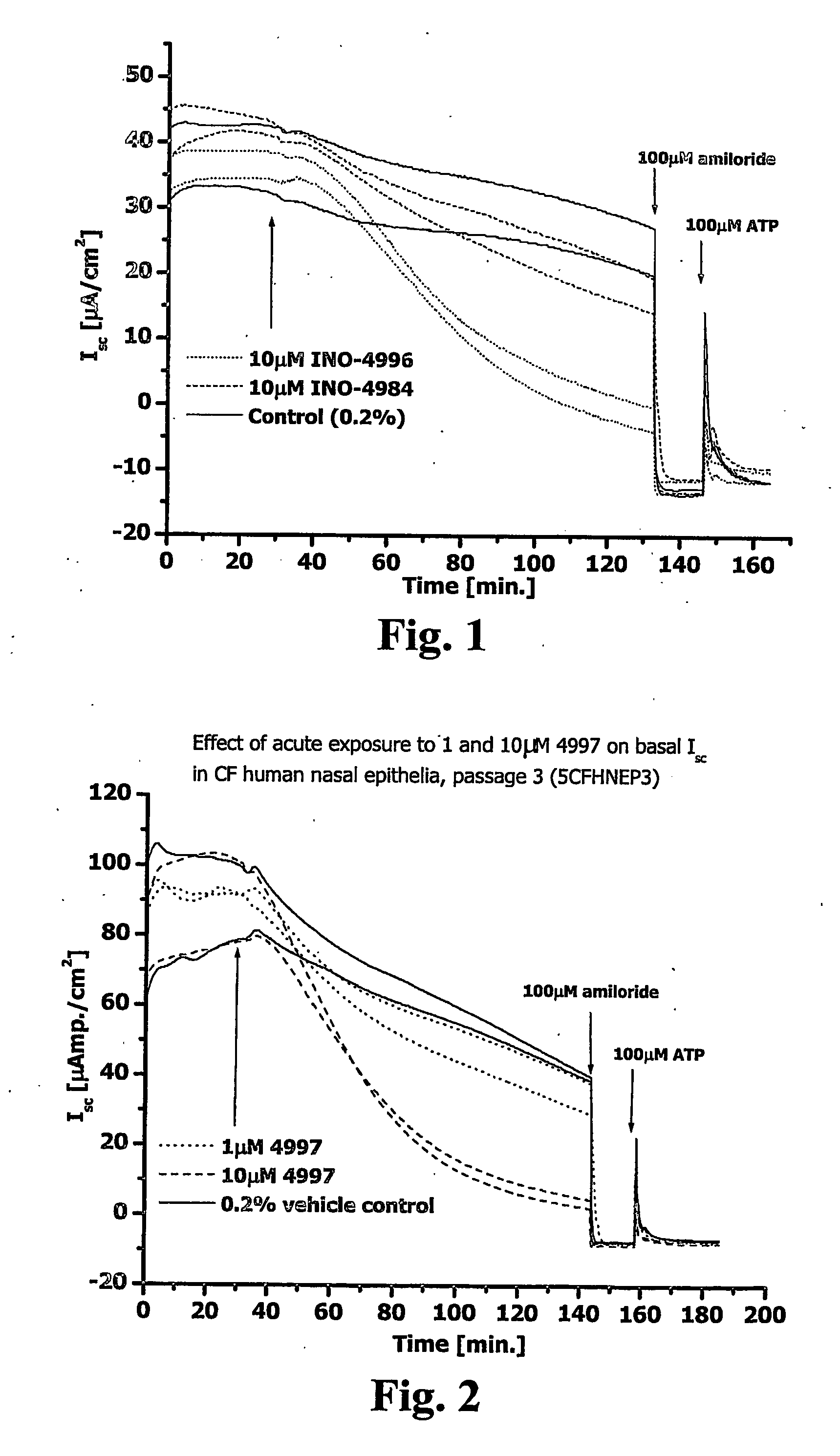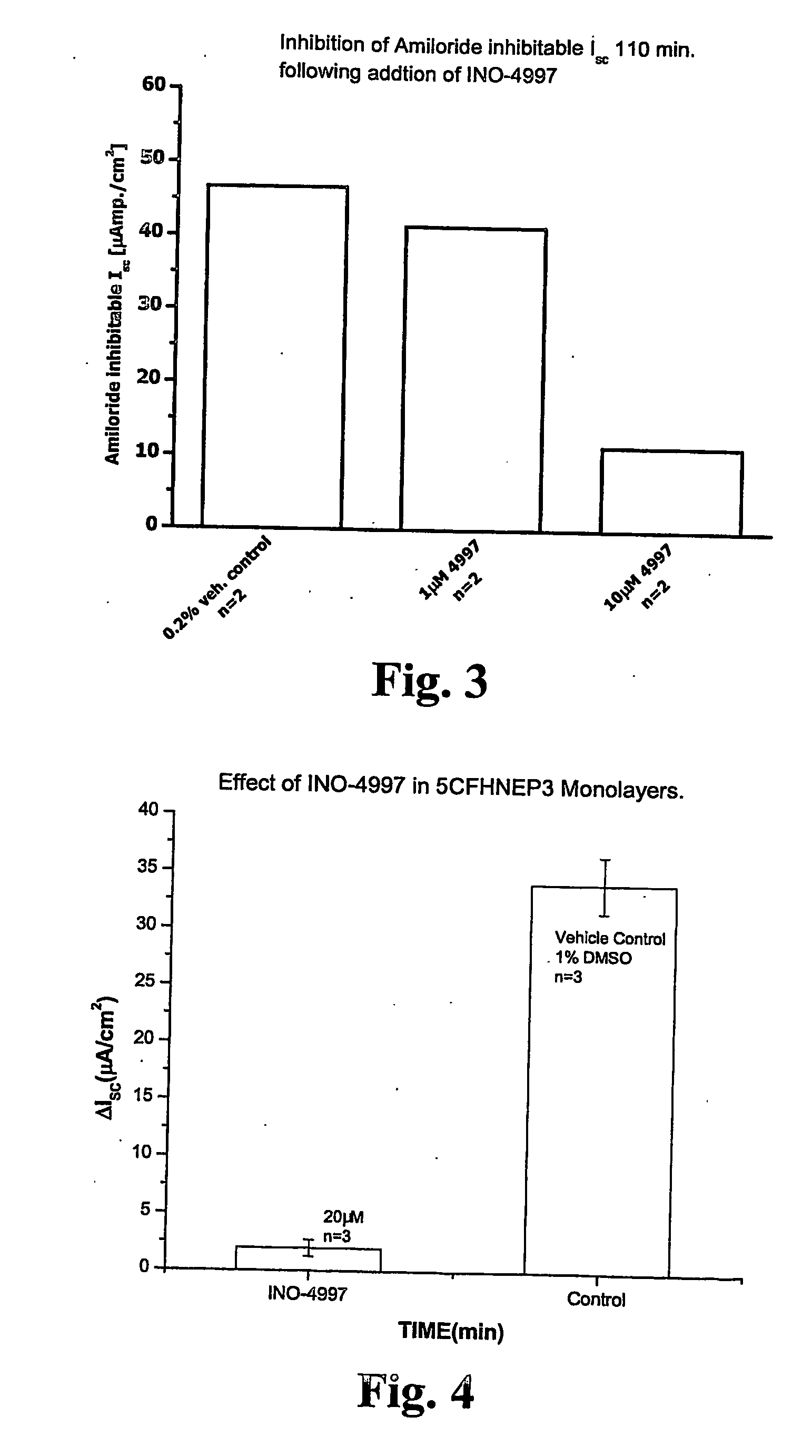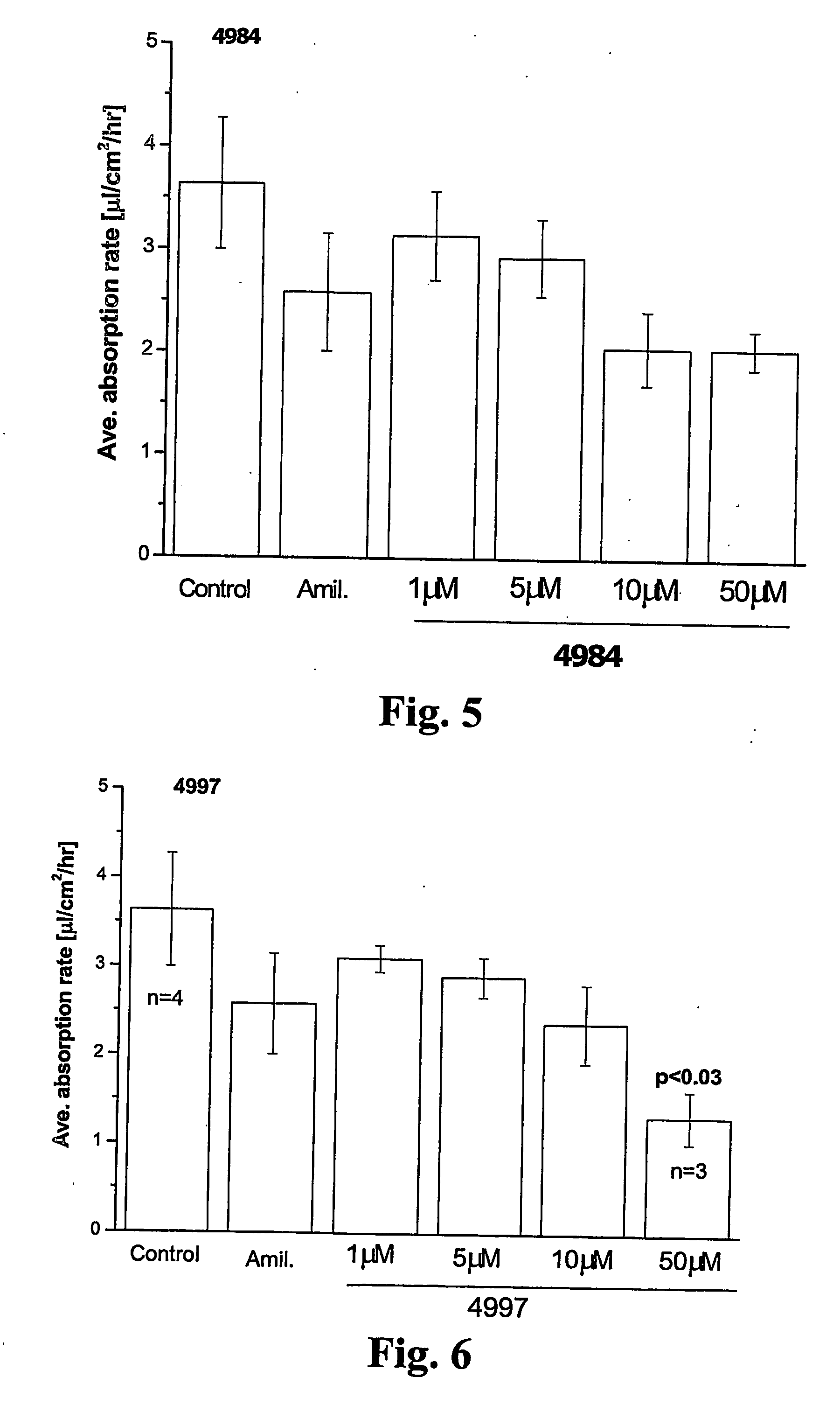Camphanylidene and phenylalkyl inositol polyphosphate compounds, compositions, and methods of their use
a technology of phenylalkyl inositol and phenylalkyl inositol, which is applied in the direction of phosphorous compound active ingredients, biocide, group 5/15 element organic compounds, etc., can solve the problems of excessive loss of electrolytes, chronic pulmonary disease, and inability to absorb sodium ions, etc., to achieve the effect of inhibiting sodium ion absorption
- Summary
- Abstract
- Description
- Claims
- Application Information
AI Technical Summary
Benefits of technology
Problems solved by technology
Method used
Image
Examples
example 1
Effect of Test Compounds on Basal Spontaneous Isc In Cystic Fibrosis Human Nasal Epithelial Cell Ussing Chamber Assay
[0084] Epithelia derived from individuals with CF are unique and display a hyperabsorptive phenotype due to defective cystic fibrosis transmembrane conductance regulator (CFTR) with concomitant loss of a Cl− conduit and dysregulation of Na+ absorption through the amiloride-sensitive Na+ channel, ENaC (Stutts, M. J. et al., “CFTR as a cAMP-dependent regulator of sodium channels,”Science 269:847-850 (1995); Stutts, M. J. et al., “Cystic fibrosis transmembrane conductance regulator inverts protein kinase A-mediated regulation of epithelial sodium channel single channel kinetics,”J. Biol Chem. 272:14037-14040 (1997)). ENaC is the rate limiting step in the regulation of sodium absorption across mucosal epithelia and as such, is an essential effector in the maintenance of airway surface liquid volume / depth (Knowles, M. R. et al., “Abnormal ion permeation through cystic fib...
example 2
Blue Dextran Volume Transport Assay
[0091] In normal human airway epithelia, Na+ and Cl− currents (CFTR and Ca2+-activated Cl− currents) contribute to airway surface liquid (ASL) fluid volume regulation depending on signaling equilibria. In contrast, in human CF airway epithelia, Na+ currents through ENaC dominate basal ASL volume regulation accompanied by a relatively minor contribution through Ca2+-activated Cl− currents. The combination of enhanced ENaC currents and transient Ca2+-activated Cl− currents in CF result in an inadequate hydration of the ASL and reduction of mucociliary clearance. To demonstrate the ability of the compounds of the invention to inhibit fluid absorption, well differentiated monolayer cultures of CF nasal epithelia were exposed to an apically applied buffer containing the compounds and a known concentration of the non-permeable molecule Blue Dextran (BD). The resulting reduction in the ability of these monolayers to concentrate BD was taken as a function...
example 3
Inhibition of iNOS by Inositol Polyphosphate Analogs
[0098] The reactive product, nitric oxide (NO), of the inducible form of nitric oxide synthase (iNOS) is a common component of inflammatory disease. This moiety acts as an adjuvant for microbicidal activity and as an autocrine / paracrine cytokine. In chronic inflammatory disease, NO may be increased 100 fold. Normal levels of NO, the result of the action of cNOS or nNOS (the constitutively expressed isoforms) are in the picomole range whereas stimulated production (iNOS) is 1000 fold higher and can be sustained for long periods. iNOS stimulation can result from bacterial products such as endotoxin or by inflammatory cytokines interferon, TNFα and IL-1 (see review, Ketteler, et. al., “Cytokines and L-arginine in renal injury and repair,”Am J Physiol Renal Physiol 267:F197-F207 (1994)).
[0099] The value of using iNOS as a reporter for anti-inflammatory activity is in its context of activation. The molecule may contribute to the rapid...
PUM
 Login to View More
Login to View More Abstract
Description
Claims
Application Information
 Login to View More
Login to View More - R&D
- Intellectual Property
- Life Sciences
- Materials
- Tech Scout
- Unparalleled Data Quality
- Higher Quality Content
- 60% Fewer Hallucinations
Browse by: Latest US Patents, China's latest patents, Technical Efficacy Thesaurus, Application Domain, Technology Topic, Popular Technical Reports.
© 2025 PatSnap. All rights reserved.Legal|Privacy policy|Modern Slavery Act Transparency Statement|Sitemap|About US| Contact US: help@patsnap.com



